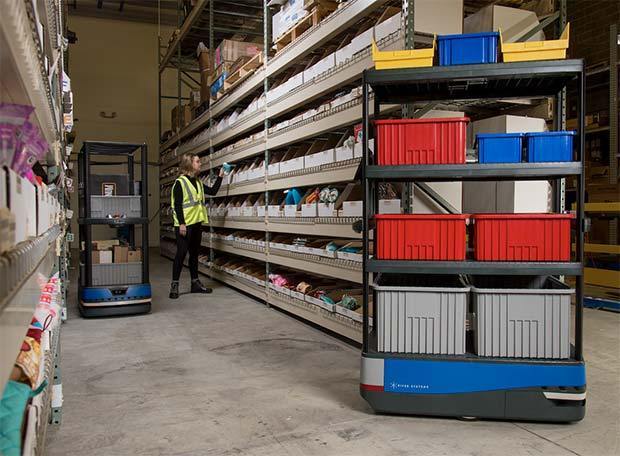5 ways automated robots are modernising the face of warehousing-【AGV, Logistic, Air Cargo, Supply Chain, Warehouse, ERP system, Logistic Management, Chinese Market】
Amid recent global events and an unpredictable business environment, warehouses and distribution centers around the world face new challenges in terms of balancing unpredictable customer demand with labor availability. As a result, fulfillment leaders have accelerated the effort to modernise their supply chains with flexible fulfillment solutions. Here are five ways that automated robots help organisations solve those challenges for both today and the long term.

1. Flexibility and scalability
The need to adjust warehouse capabilities to accommodate fluctuating demand is a common challenge in today’s fulfillment landscape. Traditional tactics like changing warehouse layouts and the use of alternate shifts may provide flexibility in certain situations, but they can be difficult and costly to coordinate. Automated robots, however, can be easily retrofitted into existing warehouse layouts or designs without the need for major changes to racking, bolts, or shuttles.
Scalability improves with the use of automated robots as well. While conveyors and sortation systems are typically static and part of the costly, fixed infrastructure of the warehouse, automated robots can be rented, transferred among facilities and/or brought online quickly to adapt to changing needs, providing necessary scalability in the modern warehousing world.
2. Improved warehouse productivity and worker safety
Staffing warehouses has become increasingly challenging as the demand for qualified workers continues to rise. Significant increases in productivity, fewer errors, and greater employee satisfaction are some of the key benefits reported by warehouse operators who have implemented collaborative robotic systems. These improvements enable warehouses with autonomous robots to more easily train and retain associates, and achieve productivity rates that rival goods-to-person technologies.
In today’s supply chain, the health and safety of warehouse associates is also paramount. As collaborative mobile robots move autonomously through the building and eliminate the long walks between induct, active picking, and takeoff areas in the warehouse, they can replace heavy push carts and greatly reduce the levels of physical strain and exertion on associates.
That autonomous movement also enables a base-level of social distancing within a warehouse – in the fight against COVID-19, the increased efficiency means fewer associates are required in the building to achieve the same throughput.
3. Intelligent decision-making
Collaborative mobile robots leverage AI and machine learning, so the systems make data-driven decisions in real-time. By guiding associates from task to task and optimising picking routes, automated robots allow associates to handle several tasks during one walking trip on the floor, thereby accomplishing more in less time. It also reduces steps between tasks and streamlines pick paths, reducing unnecessary walking.
4. Rapid ROI
Traditional warehouse automation systems can take 12 to 24 months to go live and as much as five years to achieve ROI. Collaborative robots provide a faster alternative for implementing automation and are safer, customisable and are designed to work with your existing warehouse processes and staff. Some robotics systems, such as 6 River Systems’ solution, can be implemented in as little as four weeks and produce ROI within a year.
5. Streamlined onboarding & training
With training built into the design (collaborative robots guide your associates through the picking process), onboarding is simpler with collaborative mobile robots. Plus, fewer mechanical touchpoints and integrations make them more intuitive to use. These innovations make onboarding and equipment training a much simpler task, even for the greenest of hires.
If you’re curious about how collaborative robotics can improve your fulfillment operations and increase pick rates at a fraction of the cost of traditional automation, visit 6 River Systems at www.6river.com to learn more.


